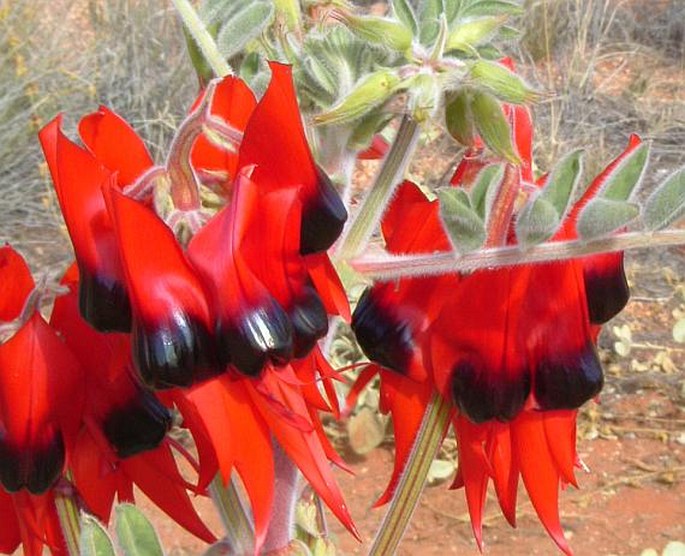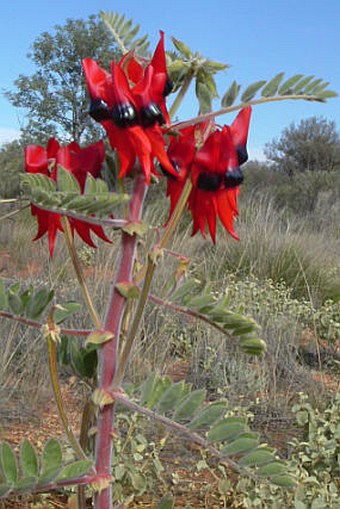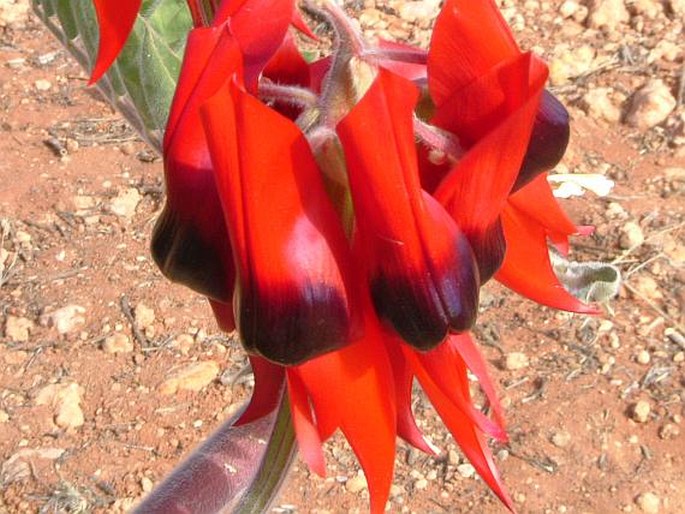Syn.: Donia formosa G. Don, Clianthus formosus (G. Don) Ford et Vickery, Colutea novae-hollandiae Walp., Willdampia formosa (G. Don) A. S. George
Family: Fabaceae Lindl.

Distribution: Central and South Australia – from Karratha (Western Australia) to New South Walles and Queensland, and from Alice Springs (Northern Territory) to South Australia – in all mainland Australian states except Victoria. It has been introduced to England in 1855.
Ecology: Sturt’s Desert Pea is well adapted to life as a desert plant. It grows in arid woodlands and on open plains, often as an ephemeral following heavy rain. Flowers mainly from January to July.
Description: An annual to biennial herb with a long roots and creeping stem. The flowering stem is erect, 50–150(–200 cm) long, greyish green to reddish, the leaves and stems are covered with downy hairs. The leaves are odd-pinnate, up to 30 cm long, petiolate, the leaflets with short petiole or sessile, eliptic, greyish green, downy with striking midrib. The inflorescence is 6–9-flowered, up to 30 cm long, the flowers are 4–9 cm in length and grow in clusters of vertical stalks, the petals are usually blood red or scarlet, rarely yellowish or whitish, with a glossy black swelling at the base of the petals. The fruit is a legume, about 5 cm long.
Note: Sturt’s Desert Pea is one of Australia’s best known wildflowers. It is the floral emblem of the state of South Australia.



These images were taken in Central Australia (by Vladimír Janeček: November 11, 2002).


